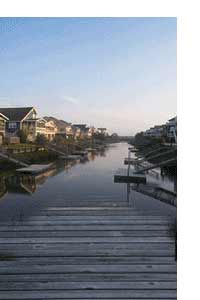Welcome to our web site!
DESERTSCAPE
DESIGN & CONSTRUCTION COMPANY
CA State License #380277
###########################################
The reason for this website is to inform the public on how to save water by using it wisely.
Water goes by many names; Fog, Mist, Frost, Clouds, Sleet, Rain, Snow, Hail, And Condensation.
Water is important to our ecosystem. Mankind needs plants to repeatedly recycle the oxygen we breath.
Drip irrigation has replaced the wasteful sprinklers and handheld watering hoses.
Why do we want to keep up the landscape? Because landscape contributes about 15% of the property values. So let's keep it GREEN.
A landscape project begins by first testing the soil and by finding out what kind of soil you have: sand, loan or clay or any combination. This will determine whether to amend your landscaping or not, and how often to water.
Clay soil requires the least amount of watering, clay stores the water, and you have to be very careful not to over water.
With sandy soil the water can travel down as much as 30 feet in an hour, so you will have to water more frequently. This will help in planning the landscape watering schedule.
Use of drought tolerant "class one" plants is considered the best. They don't have to be cactus or succulents.
As a landscape student at Cuyamaca College in San Diego, CA, I maintain the landscape here each Sunday after church from noon to six in the evening. Cuyamaca College has excellent drought tolerant landscape and serves as a good example to the community. Please visit me and pick up some water conservation gardening and drought tolerant landscape ideas any Sunday afternoon.
Visit me any Sunday afternoon at my job site:
The Sweetwater Self-Storage Co. is located in Rancho San Diego:
10751 U.S. Elevator Rd, Rancho San Diego, CA.
I used Rockroses and Gazania Daisies. The rabbits and wildlife ate all the Gazania Daisies and out of the 120 Rockroses, only 14 Rockroses were not eaten.
I have since then switched to Salvias or Sage Plants. The wildlife and deer included don't like the smell, but don't be fooled; if it were only thing they had to eat they would eat them too.
At Cuyamaca College, we save a lot of water because drought tolerant class one plants take very little water after 18-24 months of deep watering.
Class one plants require water every three or four weeks.
Class two plants require water every two weeks.
Class three plants require water once every week and
Class four plants require water twice a week.
Water facts:
97.4 percent of all water on planet earth is located in the oceans, saltwater lakes or brackish groundwater.
1.76 percent of all water is located in glaciers, permanent snow covered ground ice/permanent snow covered ground ice/permanent frost.
Less than one percent of the earth's water is fresh and available for human use and management.
Global usage of freshwater has doubled since 1955.
Only .85 percent is fresh and useable water.
Southern California has to import 95% of its water from Northern California and the Colorado River.
In the next two years we will lose 700 thousand-acre feet to Arizona and Nevada because of their growth.
Only five percent of California water comes from lakes, reservoirs, and watersheds.
The term "xeriscape" is used to describe drought tolerant landscape approach. It means "water conservation through creative landscaping." It is a registered trademark of the National Xeriscape Council, Inc. of Austin, Texas, a non-profit organization dedicated to water conservation.
The principles associated with the concept of xeriscape have been long advocated on the Prairies. They include: appropriate planning and design, soil improvement, efficient irrigation, practical turf areas, appropriate plant selection, use of mulches, and maintenance.
Xeriscape (pronounced zee-eh-scape) is made up of the Greek word "xeros," which means dry, and the English word "scape," which means a distant view through an opening. Xerisape landscaping is water conservation through creative and approximate landscaping. Xeriscape exist throughout southern California because of the dry climate.
We should follow the the following steps of xeriscape beginning with:
-
Soil test, and then by
-
Amending your soil, using drought tolerant plants - class one, installing drip systems, which is 50% more efficient than spray.
-
Mulching which will cut down on the weeds and irrigation evaporation and, a must is,
-
Regular maintenance of irrigation system to get maximum performance.
A typical home has enough reusable water for all of its irrigation needs when a subsurface drip system is used.
Reuse of water can supplement an irrigation systems capture, filter and reuse about 50% of all the water you use inside your home, year after year. This 40-50 gallons per person per day of water comes from the showers, tubs, bathroom sinks and laundry. It is then used in our subsurface drip system, which is up to 60% more efficient than spray irrigation.
The use of rewater systems is the only legal gray water system. Visit http://www.rewater.com for full details about this innovative irrigation method. With a record drought and rainfall only 3.02 inches and wildlife is struggling and our ornamental plants severally stressed out, it will be up to all of use to do our part. Lets make every drop count. See the San Diego Union Tribune June, 30, 2002, page B1 regarding the San Diego, CA "Record Drought". www.signonsandiego.com.

